Abstract
Neuropeptides are defined chemical messengers produced by the brain to modulate its own activity and also to regulate the function of every organ system. These neuropeptides can be viewed as coded chemical signals produced by the brain and secreted into the blood or into other fluids, such as the cerebrospinal fluid, to be transported and to act at a distant site. The signals arrive to the target organ or sometimes to an intermediary station, such as the pituitary gland, where they are decoded, transformed into a more powerful signal, and sent again through the general circulation to reach their final target. Our work has characterized the episodic or pulsatile pattern of secretion of a number of peptide hormones produced by the brain or the pituitary gland and analyzed the brain mechanisms involved in the generation of such a pulsatile pattern of hormone secretion. Molecular biology approaches have provided information on the synthesis, processing, and secretion of these brain messengers. In addition, using computer-assisted perifusion systems, we have been able to reproduce in vitro some of the signals produced by the brain and are currently trying to decode the message carried by those signals, as well as determining the intracellular messengers involved in the signal process. The importance of the neuropeptides and of the messages carried by the pulsatile signal is underlined by experiments in which animals treated with a neurotoxin were rendered infertile.(ABSTRACT TRUNCATED AT 250 WORDS)
Full text
PDF
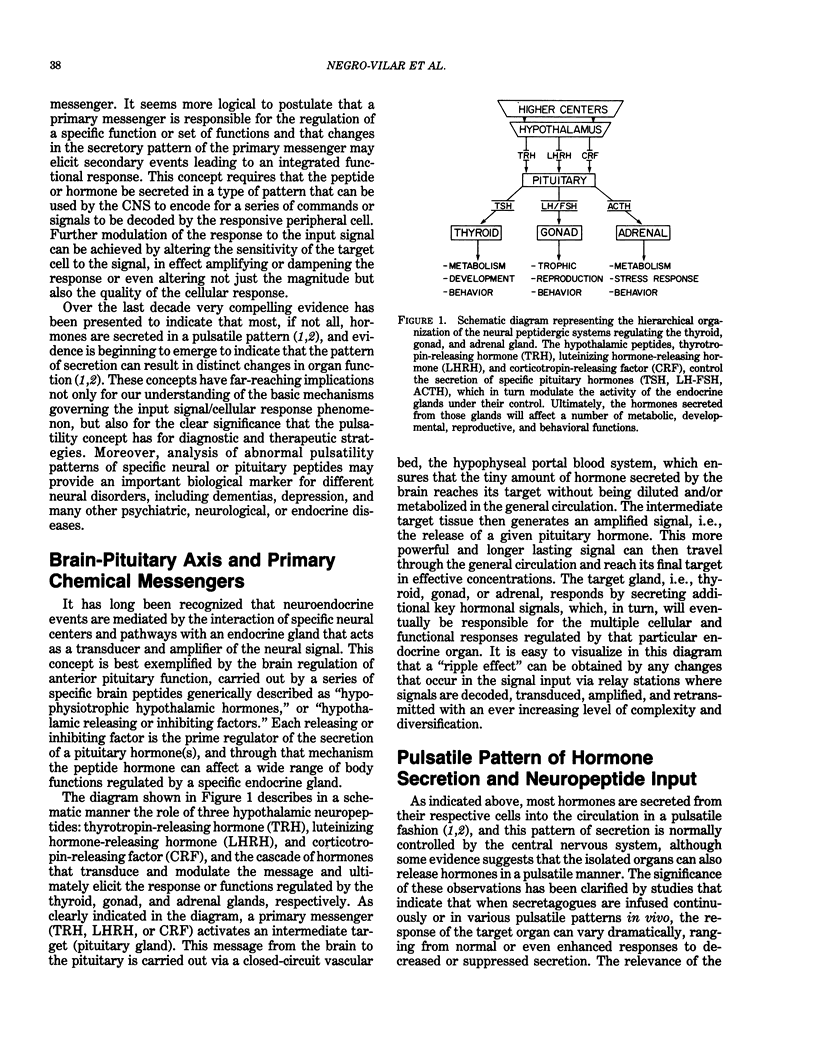

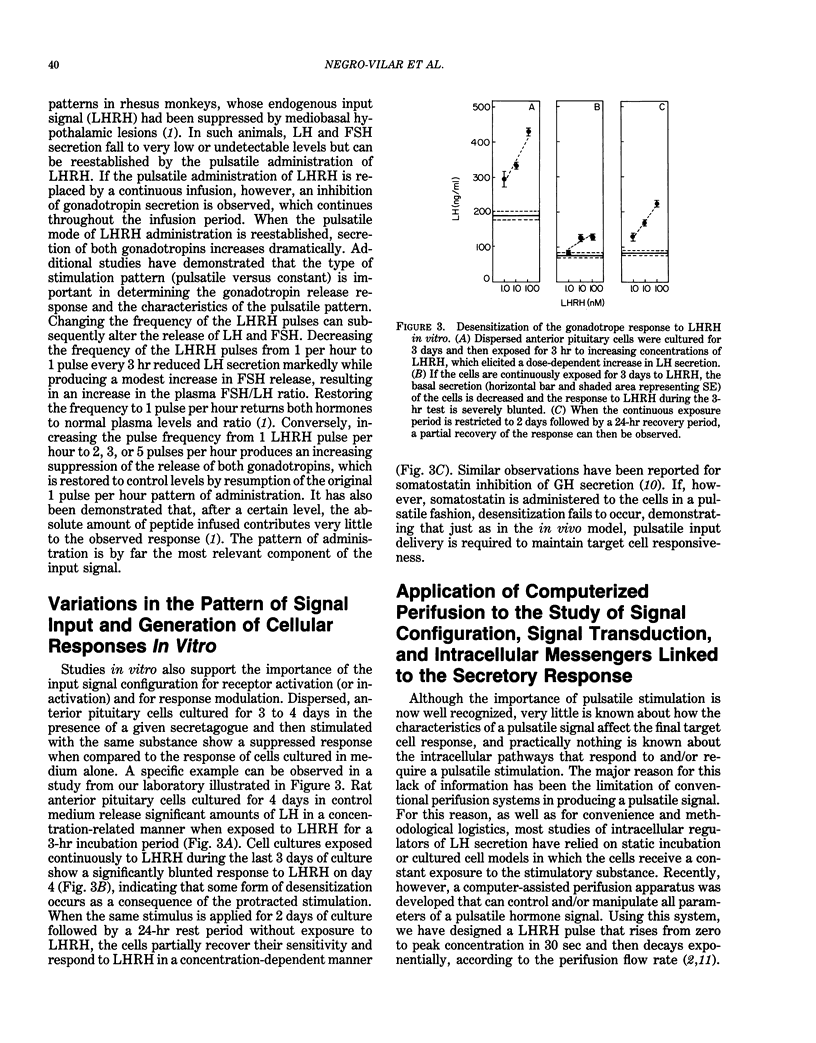
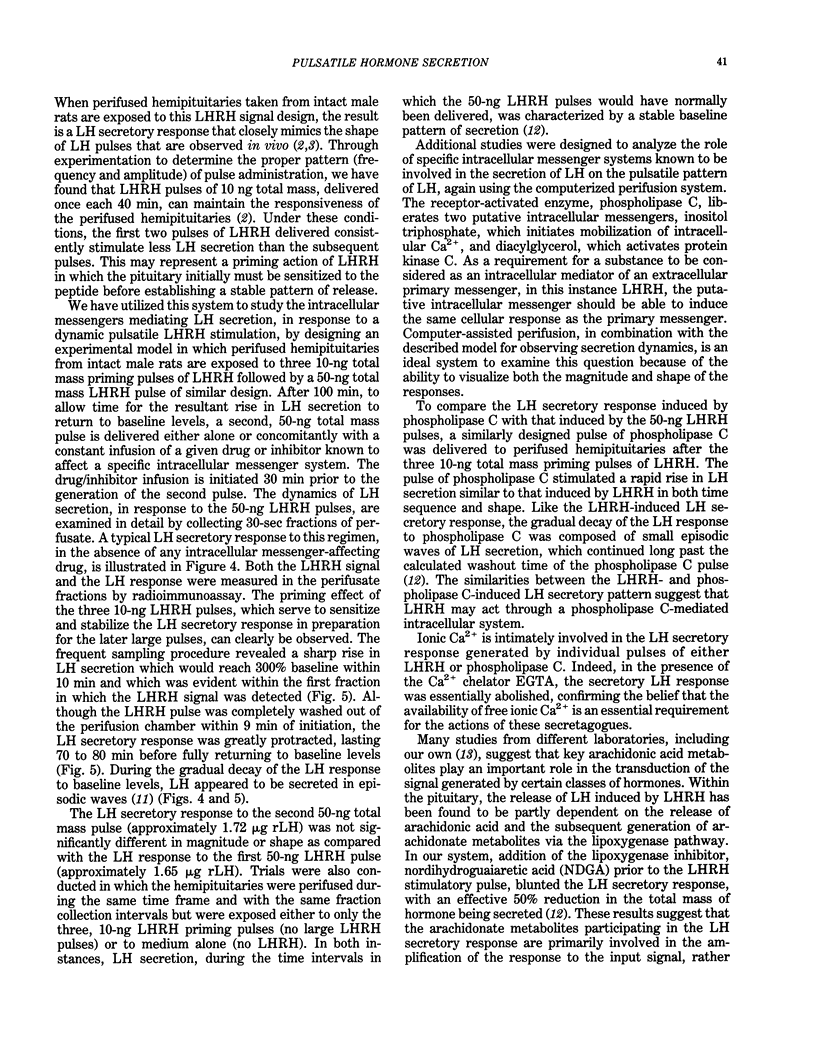
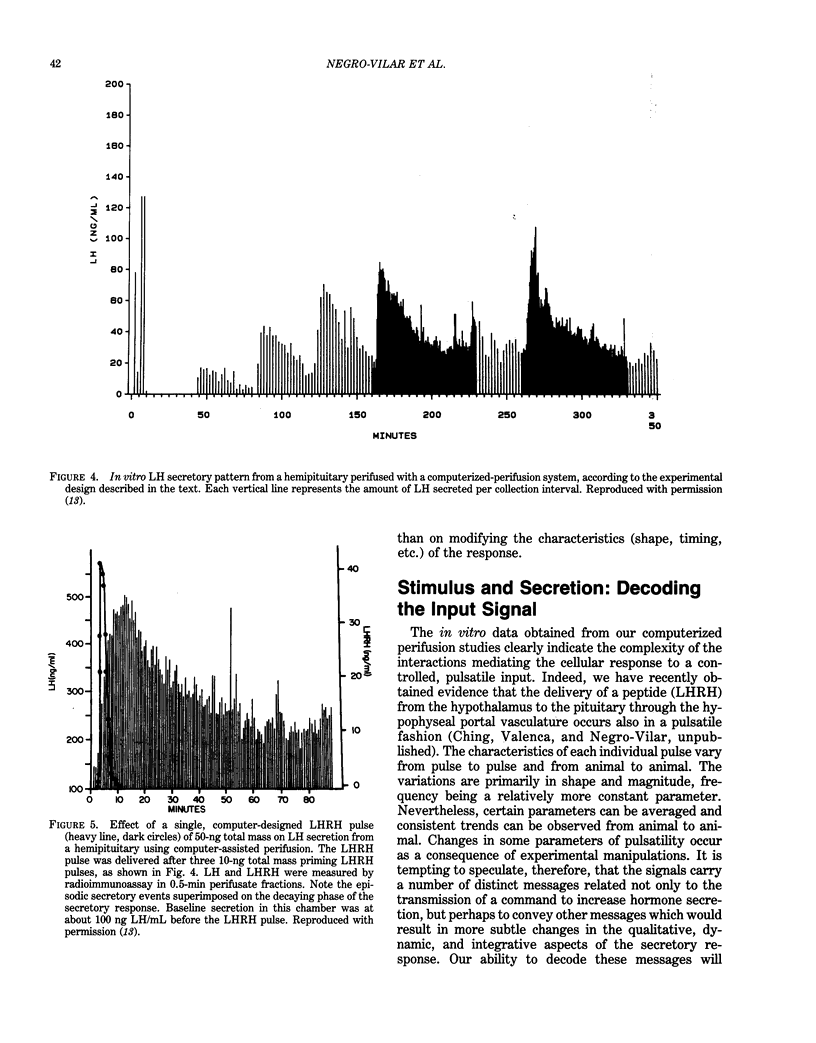
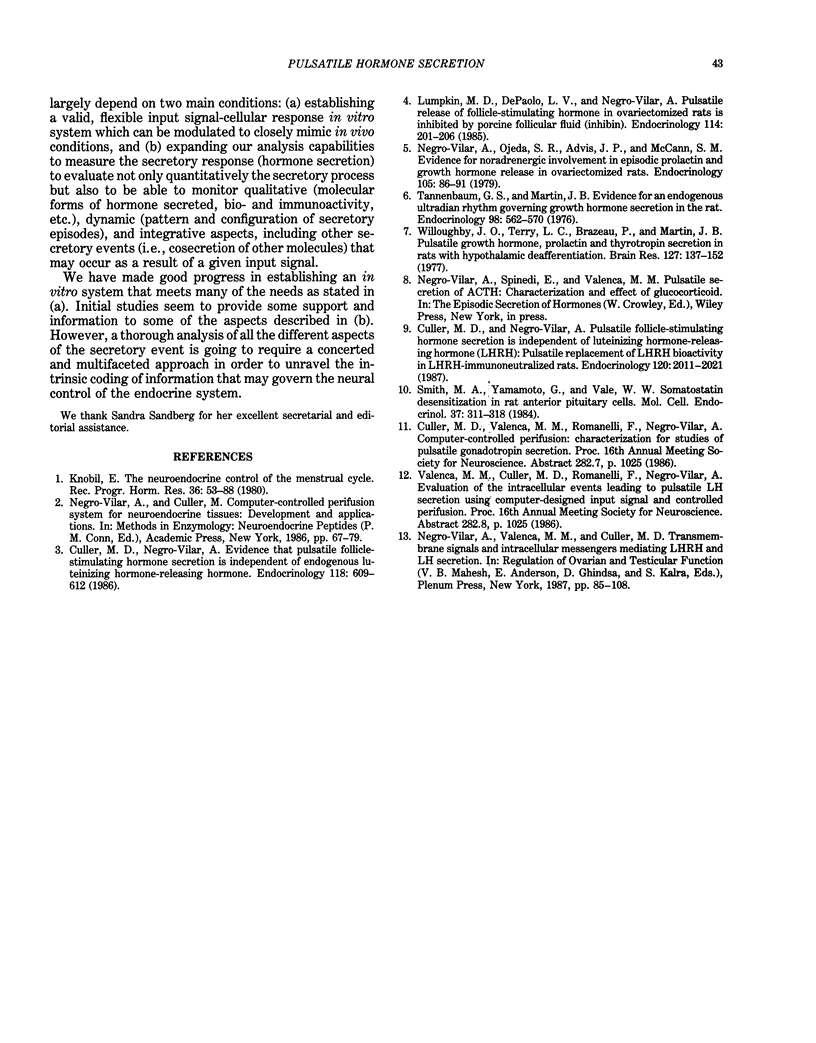
Selected References
These references are in PubMed. This may not be the complete list of references from this article.
- Culler M. D., Negro-Vilar A. Evidence that pulsatile follicle-stimulating hormone secretion is independent of endogenous luteinizing hormone-releasing hormone. Endocrinology. 1986 Feb;118(2):609–612. doi: 10.1210/endo-118-2-609. [DOI] [PubMed] [Google Scholar]
- Culler M. D., Negro-Vilar A. Pulsatile follicle-stimulating hormone secretion is independent of luteinizing hormone-releasing hormone (LHRH): pulsatile replacement of LHRH bioactivity in LHRH-immunoneutralized rats. Endocrinology. 1987 May;120(5):2011–2021. doi: 10.1210/endo-120-5-2011. [DOI] [PubMed] [Google Scholar]
- Knobil E. The neuroendocrine control of the menstrual cycle. Recent Prog Horm Res. 1980;36:53–88. doi: 10.1016/b978-0-12-571136-4.50008-5. [DOI] [PubMed] [Google Scholar]
- Lumpkin M. D., DePaolo L. V., Negro-Vilar A. Pulsatile release of follicle-stimulating hormone in ovariectomized rats is inhibited by porcine follicular fluid (inhibin). Endocrinology. 1984 Jan;114(1):201–206. doi: 10.1210/endo-114-1-201. [DOI] [PubMed] [Google Scholar]
- Negro-Vilar A., Culler M. D. Computer-controlled perifusion system for neuroendocrine tissues: development and applications. Methods Enzymol. 1986;124:67–79. doi: 10.1016/0076-6879(86)24009-4. [DOI] [PubMed] [Google Scholar]
- Negro-Vilar A., Ojeda S. R., Advis J. P., McCann S. M. Evidence for noradrenergic involvement in episodic prolactin and growth hormone release in ovariectomized rats. Endocrinology. 1979 Jul;105(1):86–91. doi: 10.1210/endo-105-1-86. [DOI] [PubMed] [Google Scholar]
- Negro-Vilar A., Valenca M. M., Culler M. D. Transmembrane signals and intracellular messengers mediating LHRH and LH secretion. Adv Exp Med Biol. 1987;219:85–108. doi: 10.1007/978-1-4684-5395-9_5. [DOI] [PubMed] [Google Scholar]
- Smith M. A., Yamamoto G., Vale W. W. Somatostatin desensitization in rat anterior pituitary cells. Mol Cell Endocrinol. 1984 Oct;37(3):311–318. doi: 10.1016/0303-7207(84)90101-1. [DOI] [PubMed] [Google Scholar]
- Tannenbaum G. S., Martin J. B. Evidence for an endogenous ultradian rhythm governing growth hormone secretion in the rat. Endocrinology. 1976 Mar;98(3):562–570. doi: 10.1210/endo-98-3-562. [DOI] [PubMed] [Google Scholar]
- Willoughby J. O., Terry L. C., Brazeau P., Martin J. B. Pulsatile growth hormone, prolactin, and thyrotropin secretion in rats with hypothalamic deafferentation. Brain Res. 1977 May 20;127(1):137–152. doi: 10.1016/0006-8993(77)90385-7. [DOI] [PubMed] [Google Scholar]


